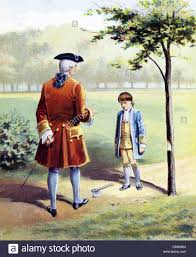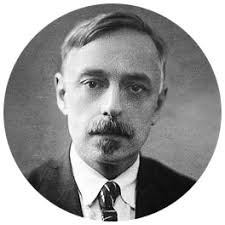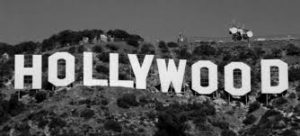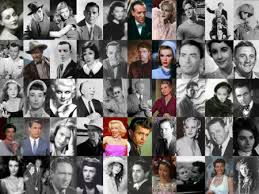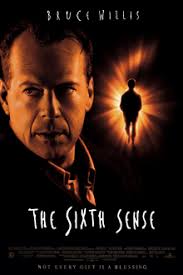
The Sixth Sense is a well-loved classic thriller movie from 1999. It was directed by M. Night Shyamalan and had Bruce Willis and Haley Joel Os as the leading roles. The story centers around an 8 year old boy, Cole Searthat (Haley Joel Os) has a supernatural ability to see dead people wherever he goes. A successful child psychologist (Bruce Willis) that gets a little too wrapped up in his work, finds Cole and makes it his sole mission to help him through his problems. Together they figure out that the ghosts are finding Cole because they think he can help them in some way and they can find peace.
Joel Os) has a supernatural ability to see dead people wherever he goes. A successful child psychologist (Bruce Willis) that gets a little too wrapped up in his work, finds Cole and makes it his sole mission to help him through his problems. Together they figure out that the ghosts are finding Cole because they think he can help them in some way and they can find peace.
A key element of thriller films like this one is the method of editing used throughout the film. “To intensify feelings of fear in the audience, film artists use sound, lighting, timing, motion and other stylistic devices” (Fu). In The Sixth Sense they altered the lighting and sound during the suspenseful parts to create a deeper reaction in the audience. In the opening of the film you can hear an eerie sounding violin playing and the theme of classical music carries on throughout the film. The high pitched whining of the violins really seems to put people on edge and adds to the suspense of the situation. Another aspect that adds suspense is how light or dark a certain scene is. For example, whenever Cole runs into his ghosts the lighting gets really dark and the violins in the background get louder. “The unusual lighting causes tension in the audience” (Fu).
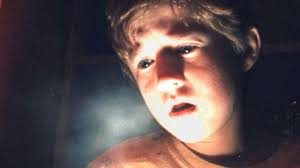
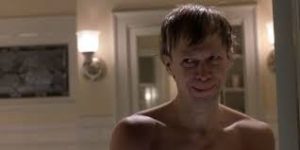
The production of The Sixth Sense was quite a process in the beginning. Originally the story was going to be about a serial killer and Bruce Willis was going to be a crime photographer and his son would see the ghosts of the victims (Variety). M. Night Shyamalan rewrote the script ten times and eventually worked it into the movie we know today. This film was nominated for 45 different awards and won 19 of them. Some of the awards won are as follows: Top Box Office Films, Best Young Performer (Haley Joel Osment), Best Director, Best Male Breakthrough Performance (Haley Joel Osment), Favorite Motion Picture, Favorite Dramatic Motion Picture, Best Original Screenplay, Best Film Editing, and Best Horror Film. It also received a rating of 85% from review on Rotten Tomatoes. The first weekend it was released it made 26 million dollars and the next four weekends after that it made anywhere from 20-29 million dollars each weekend.
In 2016 The Sixth Sense was number 89 on AFI’s Top 100 list of movies from the last 100 years. When this film was first released in theaters it was number one at the box office for a solid 5 weeks and raked in 40 million dollars (Atlantic). The reason behind The Sixth Sense’s immense success is mostly due to how well they pulled off the twist at the end. The movie started off with a graphic scene of an old patient breaking into the psychologist’s home and shooting him in the stomach. Before finding out what happens to the psychologist the plot line introduces the boy and you kind of assume that he just healed from his injury. At the very end it is revealed that the psychologist actually died from his gunshot wound and was one of the many ghosts visiting Cole to try and find the help they need.
SOURCES
Fu. “Figure 2f from: Irimia R, Gottschling M (2016) Taxonomic Revision of Rochefortia Sw. (Ehretiaceae, Boraginales). Biodiversity Data Journal 4: e7720. Https://Doi.org/10.3897/BDJ.4.e7720.” doi:10.3897/bdj.4.e7720.figure2f.
Nichols, Mackenzie. “’The Sixth Sense’ Turns 20: M. Night Shyamalan and Haley Joel Osment Tell All.” Variety, 2 Aug. 2019, variety.com/2019/film/news/the-sixth-sense-turns-20-m-night-shyamalan-haley-joel-osment-1203259434/.
Sims, David. “How ‘The Sixth Sense’ Conquered Hollywood in 1999.”
The Atlantic, Atlantic Media Company, 6 Aug. 2019, www.theatlantic.com/entertainment/archive/2019/08/how-sixth-sense-conquered-hollywood-1999/595558/.
“Sixth Sense Movie Cole Important Effects.” – SameDayPapers.me, 6 Sept. 2017, samedaypapers.me/sixth-sense-movie-cole-important-effects/.

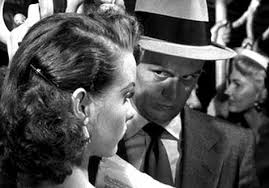 actions while he subtly folds up a newspaper and uses that to steal Candy’s wallet. Then in other scenes they used a wider angle in order to incorporate the action being shown. An example of this is when Joey is beating up Candy for not retrieving the films. The camera is in a fixed spot and has a perfect view of the whole room. The fight between Joey and Candy travelled
actions while he subtly folds up a newspaper and uses that to steal Candy’s wallet. Then in other scenes they used a wider angle in order to incorporate the action being shown. An example of this is when Joey is beating up Candy for not retrieving the films. The camera is in a fixed spot and has a perfect view of the whole room. The fight between Joey and Candy travelled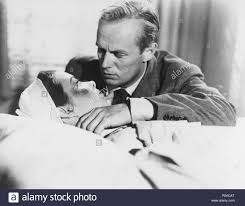 all over the room and a decent amount of damage was done. After the fight scene they show Candy in the hospital with significant bruising. This was done with special effects makeup.
all over the room and a decent amount of damage was done. After the fight scene they show Candy in the hospital with significant bruising. This was done with special effects makeup.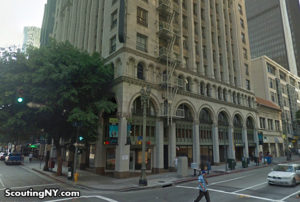
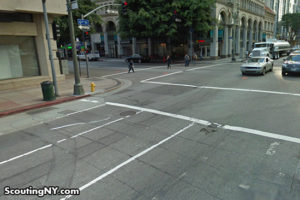
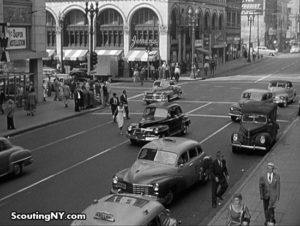
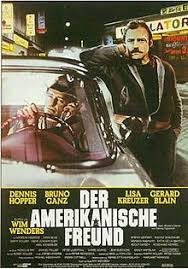
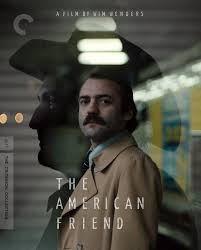
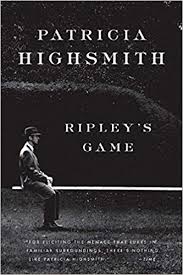 it was called Ripley’s Game. The movie itself is about a man named Tom Ripley. Ripley is a very wealthy American living in Germany. Ripley makes a living by scamming people at auctions for fake art. His partner would bring out some forged paintings and Ripley would be in the crowd raising the price in the auction. While doing his usual scheme he meets a very sick man named Jonathon Zimmermann. Zimmermann is a picture framer and doesn’t have much respect for Ripley. The movie goes on to tell a twisted tale of Ripley making Zimmermann believe that he’s far more ill than he really is. He even went so far as to forge medical results to make Zimmermann desperate and more open to living a life of crime. Zimmermann is actually unaware of Ripley’s part in falsifying his medical records and forms a kind of bond with him. This leads to Ripley protecting Zimmermann in a way from a gangster that wants to use him in a murder. Zimmermann begins to think that the mafia wants to kill him so him and Ripley set up in his mansion to wait for their attackers. Zimmermann and Ripley kill their almost-assassins and then load their bodies up into an ambulance for disposal. In the end Zimmermann does find out that his medical records were faked and ends up abandoning his partner Ripley. Zimmerman ends up dying from some unknown reason while he’s driving away and that’s the end of the movie.
it was called Ripley’s Game. The movie itself is about a man named Tom Ripley. Ripley is a very wealthy American living in Germany. Ripley makes a living by scamming people at auctions for fake art. His partner would bring out some forged paintings and Ripley would be in the crowd raising the price in the auction. While doing his usual scheme he meets a very sick man named Jonathon Zimmermann. Zimmermann is a picture framer and doesn’t have much respect for Ripley. The movie goes on to tell a twisted tale of Ripley making Zimmermann believe that he’s far more ill than he really is. He even went so far as to forge medical results to make Zimmermann desperate and more open to living a life of crime. Zimmermann is actually unaware of Ripley’s part in falsifying his medical records and forms a kind of bond with him. This leads to Ripley protecting Zimmermann in a way from a gangster that wants to use him in a murder. Zimmermann begins to think that the mafia wants to kill him so him and Ripley set up in his mansion to wait for their attackers. Zimmermann and Ripley kill their almost-assassins and then load their bodies up into an ambulance for disposal. In the end Zimmermann does find out that his medical records were faked and ends up abandoning his partner Ripley. Zimmerman ends up dying from some unknown reason while he’s driving away and that’s the end of the movie.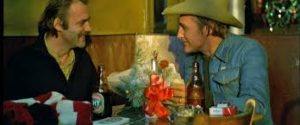
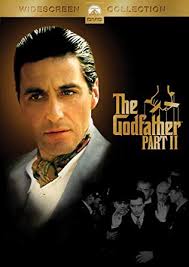
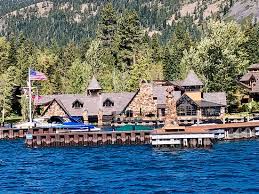
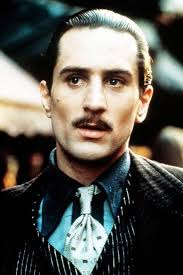
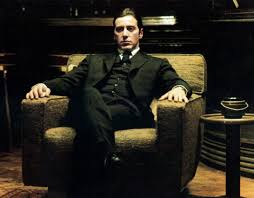
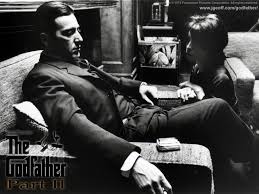 clearly (eportfolios). An example of this, along with angle choice is when Connie, Michael’s sister, is begging him to forgive their other brother Fredo. While the camera is on Connie it’s kept at a somewhat high angle to give the sense of vulnerability on Connie’s part. When the camera was on Michael it was filmed directly at eye level. This really emphasized the fact that Michael was above Connie both physically and in terms of power.
clearly (eportfolios). An example of this, along with angle choice is when Connie, Michael’s sister, is begging him to forgive their other brother Fredo. While the camera is on Connie it’s kept at a somewhat high angle to give the sense of vulnerability on Connie’s part. When the camera was on Michael it was filmed directly at eye level. This really emphasized the fact that Michael was above Connie both physically and in terms of power.
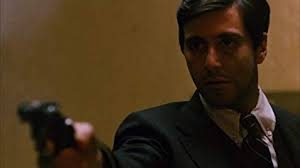
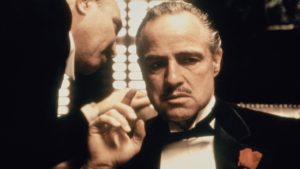
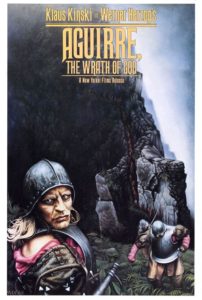 Aguirre, the Wrath of God is a West German-Mexican-Peruvian historical drama. It was directed by Werner Herzog, a German director, in the year 1972. The story takes place in 16th-century Peru. In the beginning the camera pans over a beautiful view of the Andes mountains. On those mountains was a large group of Spanish conquistadors on their mission to find the mythical city El Dorado. The travelers believed that El Dorado was a city with massive amounts of gold and that they could conquer it. After some time the men decided that they would create a group of 40 men that would go off on their own expedition. They were given one week to find more information on El Dorado or the natives living in the jungle or that they would be presumed dead.
Aguirre, the Wrath of God is a West German-Mexican-Peruvian historical drama. It was directed by Werner Herzog, a German director, in the year 1972. The story takes place in 16th-century Peru. In the beginning the camera pans over a beautiful view of the Andes mountains. On those mountains was a large group of Spanish conquistadors on their mission to find the mythical city El Dorado. The travelers believed that El Dorado was a city with massive amounts of gold and that they could conquer it. After some time the men decided that they would create a group of 40 men that would go off on their own expedition. They were given one week to find more information on El Dorado or the natives living in the jungle or that they would be presumed dead. 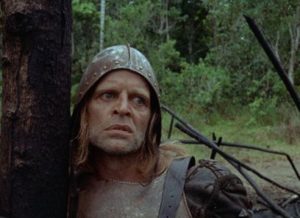 Another interesting aspect to the production was the main actor Klaus Kinski. Herzog had “described his relationship with Kinski as two oppositional forces of Nature that when joined reach a critical mass” (Deep Focus Review). Kinski’s overbearing nature is actually what landed him the part. Before playing in Aguirre, the Wrath of God Kinski played a theatrical Jesus on tour. He would basically stand on a stage with a microphone and rant about how he was Jesus and he would insult the audience who would then insult him back. While he was on the set of Aguirre, the Wrath of God he wasn’t much better. It was reported that one night he was upset about some locals being “too noisy” in their tent so he took his rifle and fired off three shots into the tent. One man was shot in the hand and almost lost his finger but thankfully nobody was killed. Kinski didn’t get in much trouble for his actions, Herzog just took away his rifle. It might seem like a crazy light punishment but it seemed Herzog was a bit crazy as well. Kinski had finally threatened to leave the production altogether and Herzog responded by saying that “the film was more important than either of them—and that if Kinski tried to leave, Herzog would get his rifle and put eight of the nine rounds into Kinski’s head, and then save the last one for himself” (Deep Focus Review) so as you can see both the heads of the production were quite unstable.
Another interesting aspect to the production was the main actor Klaus Kinski. Herzog had “described his relationship with Kinski as two oppositional forces of Nature that when joined reach a critical mass” (Deep Focus Review). Kinski’s overbearing nature is actually what landed him the part. Before playing in Aguirre, the Wrath of God Kinski played a theatrical Jesus on tour. He would basically stand on a stage with a microphone and rant about how he was Jesus and he would insult the audience who would then insult him back. While he was on the set of Aguirre, the Wrath of God he wasn’t much better. It was reported that one night he was upset about some locals being “too noisy” in their tent so he took his rifle and fired off three shots into the tent. One man was shot in the hand and almost lost his finger but thankfully nobody was killed. Kinski didn’t get in much trouble for his actions, Herzog just took away his rifle. It might seem like a crazy light punishment but it seemed Herzog was a bit crazy as well. Kinski had finally threatened to leave the production altogether and Herzog responded by saying that “the film was more important than either of them—and that if Kinski tried to leave, Herzog would get his rifle and put eight of the nine rounds into Kinski’s head, and then save the last one for himself” (Deep Focus Review) so as you can see both the heads of the production were quite unstable.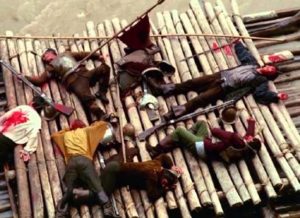 real explosions but when it came to things like blood it was very obviously bright red paint being splattered. One element focused on heavily in the film is noise. Almost the entire film there’s constant chattering of animals in the jungle or the rushing water in the rapids beneath them. Occasionally Herzog would cut all of the noise and make everything disturbingly silent. This was to make the viewers uncomfortable, like the characters were in the movie, because it always followed with a wild attack from the cannibalistic natives hiding in the jungle.
real explosions but when it came to things like blood it was very obviously bright red paint being splattered. One element focused on heavily in the film is noise. Almost the entire film there’s constant chattering of animals in the jungle or the rushing water in the rapids beneath them. Occasionally Herzog would cut all of the noise and make everything disturbingly silent. This was to make the viewers uncomfortable, like the characters were in the movie, because it always followed with a wild attack from the cannibalistic natives hiding in the jungle. 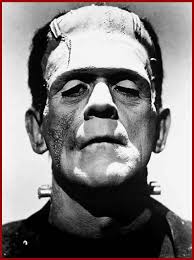 industry that started in the 1900’s (sreevesg). It allows regular people to become extraordinary things like Frankenstein or a werewolf. Originally the most common items used in special effects makeup were collodion, mortician’s wax, putty, and spirit gum.
industry that started in the 1900’s (sreevesg). It allows regular people to become extraordinary things like Frankenstein or a werewolf. Originally the most common items used in special effects makeup were collodion, mortician’s wax, putty, and spirit gum.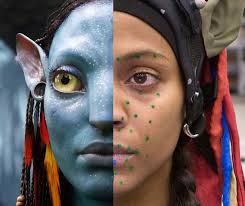 CGI technology advances. CGI stands for Computer-Generated Imagery and it allows filmers to digitally create something as big as an entire scene or something as small as removing an imperfection from an actors face (QZ). CGI has been used in films to edit the appearance of actors by making them look younger, altering their body to make them look thinner, or even adding artificial tears to their face (QZ).
CGI technology advances. CGI stands for Computer-Generated Imagery and it allows filmers to digitally create something as big as an entire scene or something as small as removing an imperfection from an actors face (QZ). CGI has been used in films to edit the appearance of actors by making them look younger, altering their body to make them look thinner, or even adding artificial tears to their face (QZ).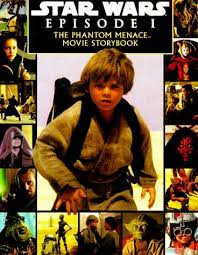 hardship on special effects makeup artists as they aren’t really needed anymore. It also doesn’t help that special effects makeup takes a long time to be applied and can be easily messed up while shooting. In a documentary, Life After Pi, they stated that between 2003 and 2013 a lot of visual effects companies were forced to file for bankruptcy (QZ). While it does seem like CGI is something that could completely erase the need for these talented artists there are still reasons to hold out. For example, In Star Wars: Episode I — The Phantom Menace there were a lot of complaints that the movie was too “cartoony” looking due to the overuse of CGI. This has lead to most studios using a blend of both special effects makeup and CGI. However, with the fact that technology is constantly advancing and becoming cheaper there may come a time where special effects makeup artists are a thing of the past.
hardship on special effects makeup artists as they aren’t really needed anymore. It also doesn’t help that special effects makeup takes a long time to be applied and can be easily messed up while shooting. In a documentary, Life After Pi, they stated that between 2003 and 2013 a lot of visual effects companies were forced to file for bankruptcy (QZ). While it does seem like CGI is something that could completely erase the need for these talented artists there are still reasons to hold out. For example, In Star Wars: Episode I — The Phantom Menace there were a lot of complaints that the movie was too “cartoony” looking due to the overuse of CGI. This has lead to most studios using a blend of both special effects makeup and CGI. However, with the fact that technology is constantly advancing and becoming cheaper there may come a time where special effects makeup artists are a thing of the past.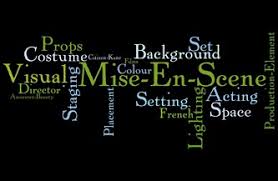
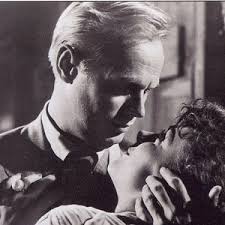 use close up shots of the actors on an overly crowded subway while Skip, the pick pocket, steals Candy’s wallet. The trend of claustrophobia continues as they introduce more characters and their homes. Skip lived in a very tiny and run down looking shack right on the water. Moe, the police’s informant, lived in just a small and dingy looking bedroom. Almost every scene is shot up close and personal. When Candy attempts to buy back the films from Skip but the end up making out instead (I found that to be a strange addition to the story line) the cameraman used a very close up shot of just the actors faces.
use close up shots of the actors on an overly crowded subway while Skip, the pick pocket, steals Candy’s wallet. The trend of claustrophobia continues as they introduce more characters and their homes. Skip lived in a very tiny and run down looking shack right on the water. Moe, the police’s informant, lived in just a small and dingy looking bedroom. Almost every scene is shot up close and personal. When Candy attempts to buy back the films from Skip but the end up making out instead (I found that to be a strange addition to the story line) the cameraman used a very close up shot of just the actors faces.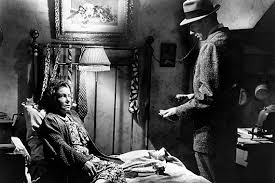 the happiest old lady. In her last scene before she’s killed she gives one last heartfelt statement to Joey that he would be doing her a favor if he killed her because she was just too tired. That’s what her surroundings really seemed to represent to me as well. It didn’t look like a home I would be comfortable and happy living in.
the happiest old lady. In her last scene before she’s killed she gives one last heartfelt statement to Joey that he would be doing her a favor if he killed her because she was just too tired. That’s what her surroundings really seemed to represent to me as well. It didn’t look like a home I would be comfortable and happy living in.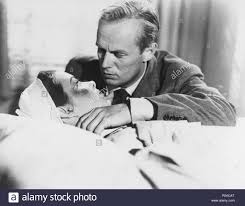 choreographed fighting where every move is planned out perfectly. Improvised fighting can end up looking more realistic than choreographed fights however it can be difficult for actors to come up with believable looking fighting without actually hurting each other. I believe that it was choreographed fighting used in Pick Up on South Street as the fight scenes weren’t all that intense or complex. Poor Candy seemed to take the brunt of it unfortunately but with there being only a few blows thrown I just think that it would’ve been simpler to plan them out ahead of time.
choreographed fighting where every move is planned out perfectly. Improvised fighting can end up looking more realistic than choreographed fights however it can be difficult for actors to come up with believable looking fighting without actually hurting each other. I believe that it was choreographed fighting used in Pick Up on South Street as the fight scenes weren’t all that intense or complex. Poor Candy seemed to take the brunt of it unfortunately but with there being only a few blows thrown I just think that it would’ve been simpler to plan them out ahead of time.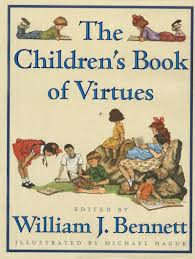 they’re stories that have been passed down from generation to generation and they instill some sort of nostalgia. For instance, when I was 1 years old my grandparents gifted me The Children’s
they’re stories that have been passed down from generation to generation and they instill some sort of nostalgia. For instance, when I was 1 years old my grandparents gifted me The Children’s